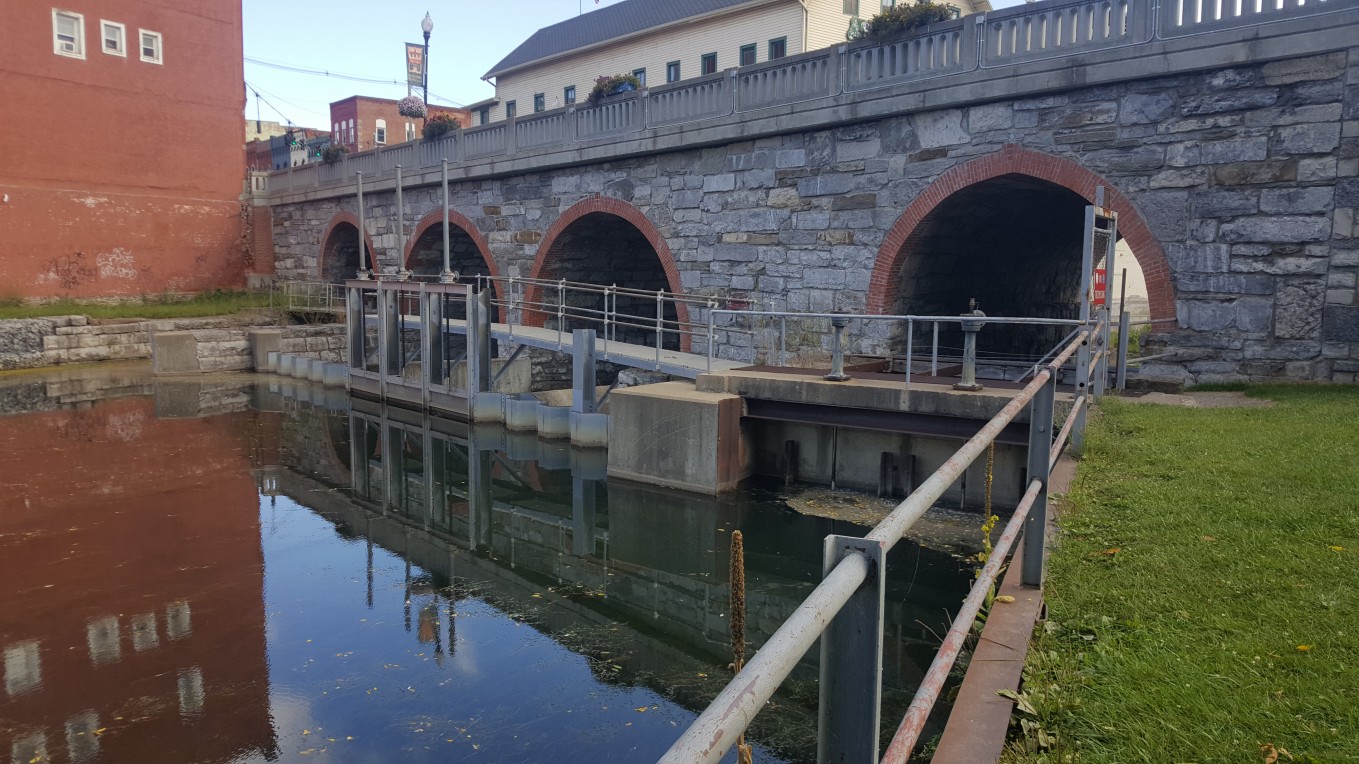04. Lake Level (KLOC)
Keuka Lake Outlet Compact (KLOC)
Keuka Lake Water Level Management
Peter Landre, CCE, Wayne Hand, KLA
December 12, 2013
The water level in Keuka Lake is often a topic of conversation and debate around the lake. I often hear from lakeshore owners the "lake is too high!" or the "lake is too low!" sometimes in the same day! Why do people have different perceptions of where the lake should be? Hard to say, but many people seem to reflect on previous years or at what level they set their dock that spring.
To determine whether the lake is in fact too high or too low, people need to compare the current day's lake level with the "Keuka Lake Level Guide" or guide curves. The water level readings are taken at the Penn Yan Water Plant, and updated every two hours on the KLA's website (view Keuka Lake level - http://www.keukalakeassociation.org/charts/keuka_lake_level.php), and published weekly in the local newspapers. This is the official level used by the Keuka Lake Outlet Compact (KLOC) to manage lake levels. The guide curves illustrate the maximum and minimum desirable lake levels for the entire year. Ideally, the lake level on any given day should fall between the maximum and minimum guide objectives. During the summer, the maximum desirable level is 714.2 and the minimum is 713.7 feet above sea level, shown per NGVD29 data. On August 31, 2013 for example, the water level was 714.0; an acceptable level between the minimum and maximum. Just place your cursor on the appropriate year’s lake level curve for the desired date, and the actual average lake level for that date will be shown. In addition, the actual outlet control gate settings and the resulting total amount of water discharge (in cubic feet per second - cfs), are also shown. To better understand how water discharge flow through the gates is calculated for any gate settings or water level, refer to Water Discharge Flow Calculations (http://www.keukalakeassociation.org/charts/discharge_calculation.php).
Who manages the lake level and how do they do it? The KLOC (Keuka Lake Outlet Compact), an inter-municipal corporation consisting of representatives from the eight municipalities around the lake shoreline, has ultimate responsibility for management of water levels and upkeep of the outlet gates. The recommended process for daily operation and management of the gates is outlined in the "Reservoir Regulation Manual-Keuka Lake Outlet" (developed by the Army Corps of Engineers), which describes the purpose and the procedures for maintaining the lake level. The Chair of the KLOC and the Director of Public Works for the Penn Yan Municipal Utility Board (contracted to operate the outlet gates) consult on a regular basis to determine if the gate settings need to be changed to increase or decrease the outflow or discharge of water from the lake.

The primary objective of the KLOC is to use the six outlet gates (shown in the picture above) to regulate the lake level and prevent flooding around the perimeter of Keuka Lake. The manual prescribes specific gate settings (and water discharge amounts), depending on where the level is in relation to the desired levels for that day. For example, if the lake were above the maximum desired level, the manual prescribes opening all of the gates to lower the lake until it reaches the desired level. To minimize the risk of downstream flooding, the manual limits the discharge rate to 1,000 cubic feet per second (cfs). However, since this rate is not achieved until the lake reaches 716.03 feet above sea level or higher with all 6 gates open, gate capacity may be fully used to correct high water situations without significantly jeopardizing downstream property. The manual also prescribes that a minimum of 20 cfs is needed to safely operate the Penn Yan sewage treatment plant.
The six control gates are located at the Main Street bridge in Penn Yan. The three "main" gates were installed in 1993 and are made of steel with openings of 6'x7' each. There are also two "Andrews" Gates (4.5'x4.5') and one Birkett Gate (5.4'x4.0'). The "main" Gates are the primary control gates during higher water events. However, the Andrews Gates are used during high and low flow periods. At the current time, the Birkett Gate, because of its age and condition, is not normally used, except during extreme events.
Why isn't the lake level always kept within the desired levels? The water level is highly dependent on the weather. During very wet or very dry periods, nature has more control and influence on the lake level than can be controlled by gate settings. If there is an extreme event, such as the 1996 or the 1972 flood, the gates simply cannot let enough water out of the lake to keep up with inflows. The KLOC is continually striving to improve and fine-tune gate settings during moderate rainfall events to minimize the "bumps" in the water levels. Close adherence to gate settings prescribed in the Operation Manual is critical to the success of keeping the level within the desired levels. At their January 2003 meeting, the KLOC adopted a "Special Event Water Release and Reduced Flow Policy." The purpose of the policy is to improve scheduling and communication of special events held on the Outlet, minimize risk, and help avoid conflicts of uses while maintaining the primary goal of flood protection and public safety. To learn more about this policy, and obtain a request form, please read Keuka Lake Outlet - Special Event Water Release and Reduced Flow Policy (www.keukalakeassociation.org/post.php?id=20).
